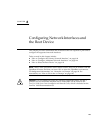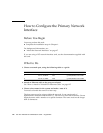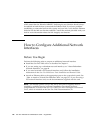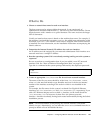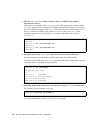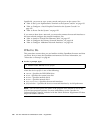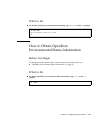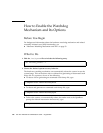
Chapter 8 Configuring Network Interfaces and the Boot Device 149
What Next
After completing this procedure, any new network interfaces are ready for
operation. However, in order for other network devices to communicate with the
system through the new interface, the IP address and host name for each new
interface must be entered into the namespace on the network name server. For
information about setting up a network name service, consult:
■ Solaris Naming Configuration Guide for your specific Solaris release
The ce device driver for the system’s on-board Sun GigaSwift Ethernet interfaces is
automatically configured during Solaris installation. For information about
operating characteristics and configuration parameters for these drivers, refer to
■ Platform Notes: The Sun GigaSwift Ethernet Device Driver
This document is available on the Solaris Software Supplement CD for your specific
Solaris release.
Note – The Sun Fire V490 system conforms to the Ethernet 10/100BASE-T standard,
which states that the Ethernet 10BASE-T link integrity test function should always
be enabled on both the host system and the Ethernet hub. If you have problems
establishing a connection between this system and your Ethernet hub, verify that the
hub also has the link test function enabled. Consult the manual provided with your
hub for more information about the link integrity test function.
How to Select the Boot Device
The boot device is specified by the setting of an OpenBoot firmware configuration
parameter called boot-device. The default setting of this parameter is disk net.
Because of this setting, the firmware first attempts to boot from the system hard
drive, and if that fails, from the on-board Sun GigaSwift Ethernet
interface.Before You Begin
Before you can select a boot device, you must complete system installation according
to the instructions in Chapter 1.





